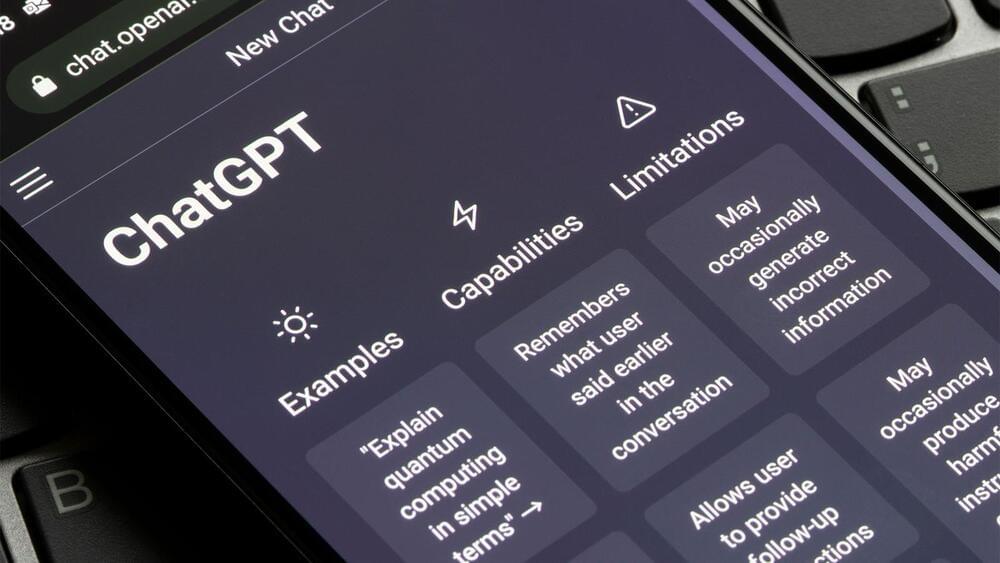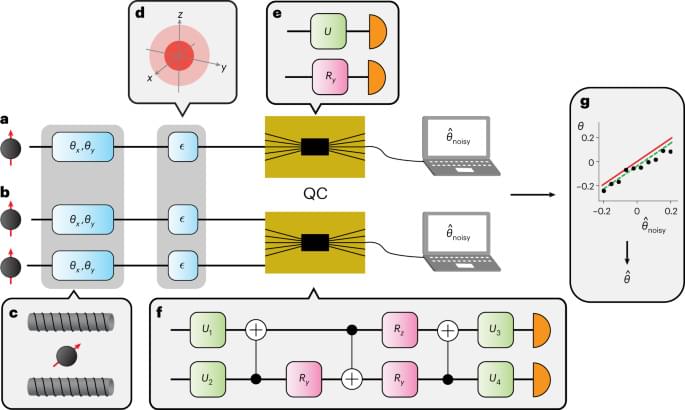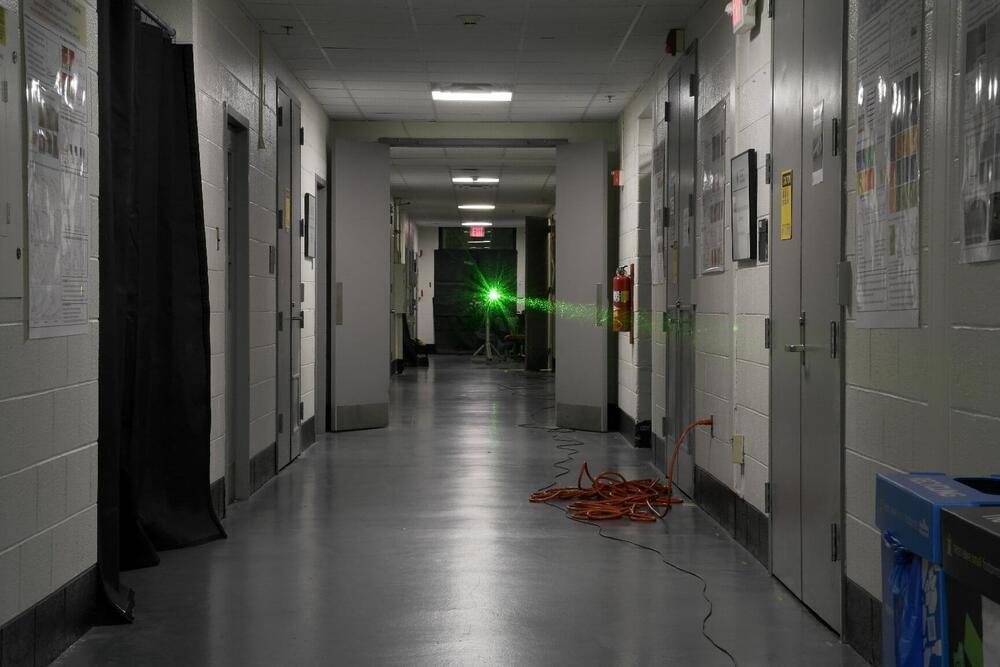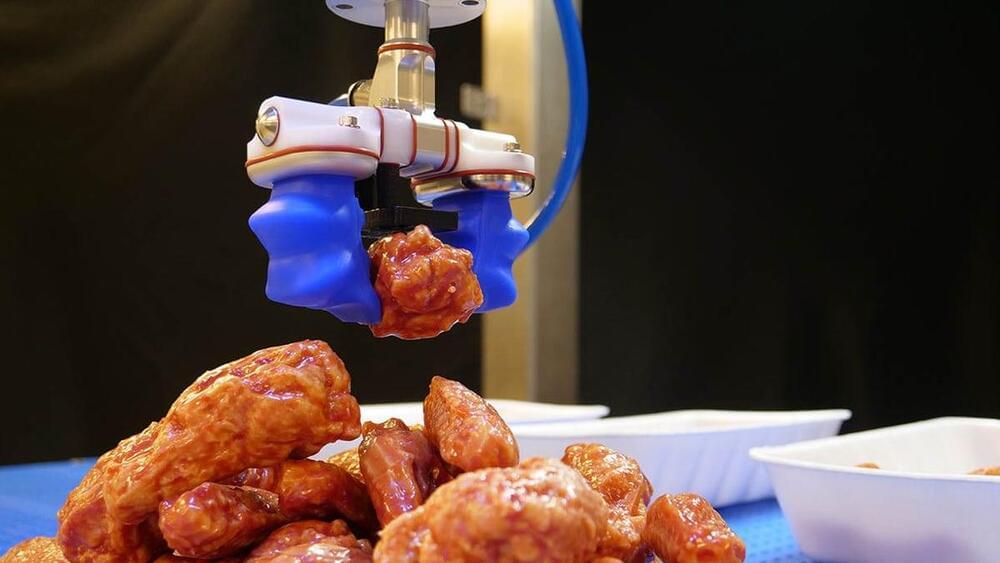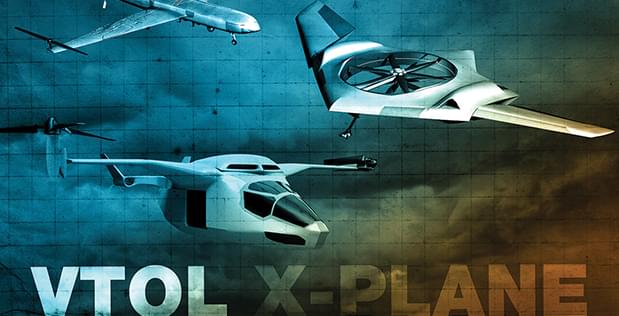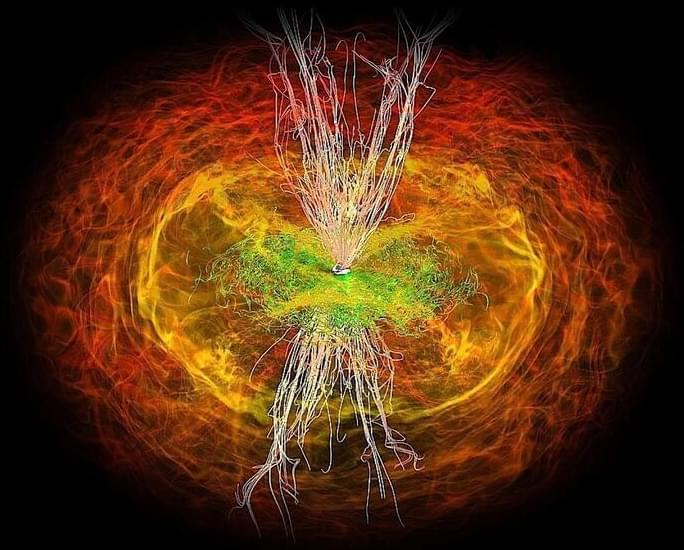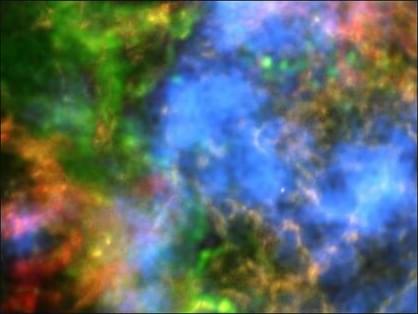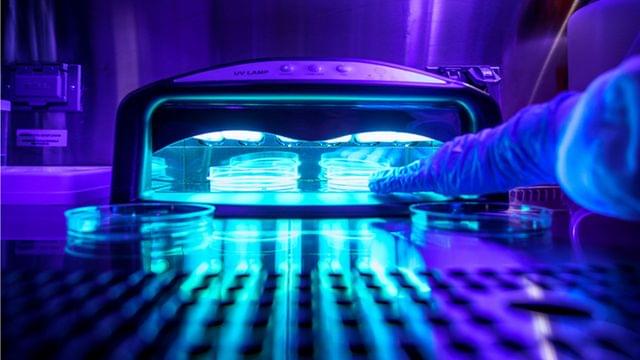Page 2617
Jan 21, 2023
Approaching optimal entangling collective measurements on quantum computing platforms Physics
Posted by Saúl Morales Rodriguéz in categories: biological, chemistry, computing, quantum physics
Quantum-enhanced single-parameter estimation is an established capability, with non-classical probe states achieving precisions beyond what can be reached by the equivalent classical resources in photonic1,2,3, trapped-ion4,5, superconducting6 and atomic7,8 systems. This has paved the way for quantum enhancements in practical sensing applications, from gravitational wave detection9 to biological imaging10. For single-parameter estimation, entangled probe states are sufficient to reach the ultimate allowed precisions. However, for multi-parameter estimation, owing to the possible incompatibility of different observables, entangling resources are also required at the measurement stage. The ultimate attainable limits in quantum multi-parameter estimation are set by the Holevo Cramér–Rao bound (Holevo bound)11,12. In most practical scenarios, it is not feasible to reach the Holevo bound as this requires a collective measurement on infinitely many copies of the quantum state13,14,15,16 (see Methods for a rigorous definition of collective measurements). Nevertheless, it is important to develop techniques that will enable the Holevo bound to be approached, given that multi-parameter estimation is fundamentally connected to the uncertainty principle17 and has many physically motivated applications, including simultaneously estimating phase and phase diffusion18,19, quantum super-resolution20,21, estimating the components of a three-dimensional field22,23 and tracking chemical processes24. Furthermore, as we demonstrate, collective measurements offer an avenue to quantum-enhanced sensing even in the presence of large amounts of decoherence, unlike the use of entangled probe states25,26.
To date, collective measurements for quantum multi-parameter metrology have been demonstrated exclusively on optical systems27,28,29,30,31,32. Contemporary approaches to collective measurements on optical systems are limited in their scalability: that is, it is difficult to generalize present approaches to measuring many copies of a quantum state simultaneously. The limited gate set available can also make it harder to implement an arbitrary optimal measurement. Indeed, the collective measurements demonstrated so far have all been restricted to measuring two copies of the quantum state and, while quantum enhancement has been observed, have all failed to reach the ultimate theoretical limits on separable measurements33,34. Thus, there is a pressing need for a more versatile and scalable approach to implementing collective measurements.
In this work, we design and implement theoretically optimal collective measurement circuits on superconducting and trapped-ion platforms. The ease with which these devices can be reprogrammed, the universal gate set available and the number of modes across which entanglement can be generated, ensure that they avoid many of the issues that current optical systems suffer from. Using recently developed error mitigation techniques35 we estimate qubit rotations about the axes of the Bloch sphere with a greater precision than what is allowed by separable measurements on individual qubits. This approach allows us to investigate several interesting physical phenomena: we demonstrate both optimal single-and two-copy collective measurements reaching the theoretical limits33,34. We also implement a three-copy collective measurement as a first step towards surpassing two-copy measurements. However, due to the circuit complexity, this measurement performs worse than single-copy measurements. We investigate the connection between collective measurements and the uncertainty principle. Using two-copy collective measurements, we experimentally violate a metrological bound based on known, but restrictive uncertainty relations36. Finally, we compare the metrological performance of quantum processors from different platforms, providing an indication of how future quantum metrology networks may look.
Jan 21, 2023
Nearly 50-meter laser experiment sets record in university hallway
Posted by Kelvin Dafiaghor in categories: computing, space
It’s not at every university that laser pulses powerful enough to burn paper and skin are sent blazing down a hallway. But that’s what happened in UMD’s Energy Research Facility, an unremarkable looking building on the northeast corner of campus. If you visit the utilitarian white and gray hall now, it seems like any other university hall—as long as you don’t peak behind a cork board and spot the metal plate covering a hole in the wall.
But for a handful of nights in 2021, UMD Physics Professor Howard Milchberg and his colleagues transformed the hallway into a laboratory: The shiny surfaces of the doors and a water fountain were covered to avoid potentially blinding reflections; connecting hallways were blocked off with signs, caution tape and special laser-absorbing black curtains; and scientific equipment and cables inhabited normally open walking space.
As members of the team went about their work, a snapping sound warned of the dangerously powerful path the laser blazed down the hall. Sometimes the beam’s journey ended at a white ceramic block, filling the air with louder pops and a metallic tang. Each night, a researcher sat alone at a computer in the adjacent lab with a walkie-talkie and performed requested adjustments to the laser.
Jan 21, 2023
Nvidia shows how surprisingly hard it is for a robot to pick up a chicken wing
Posted by Kelvin Dafiaghor in categories: food, robotics/AI
The chipmaker is showcasing how a robotics startup is using its simulation platform to train robots to pick up food like pieces of chicken.
Jan 21, 2023
GPT-4: The AI Breakthrough That Will Change Everything
Posted by Kelvin Dafiaghor in categories: education, robotics/AI
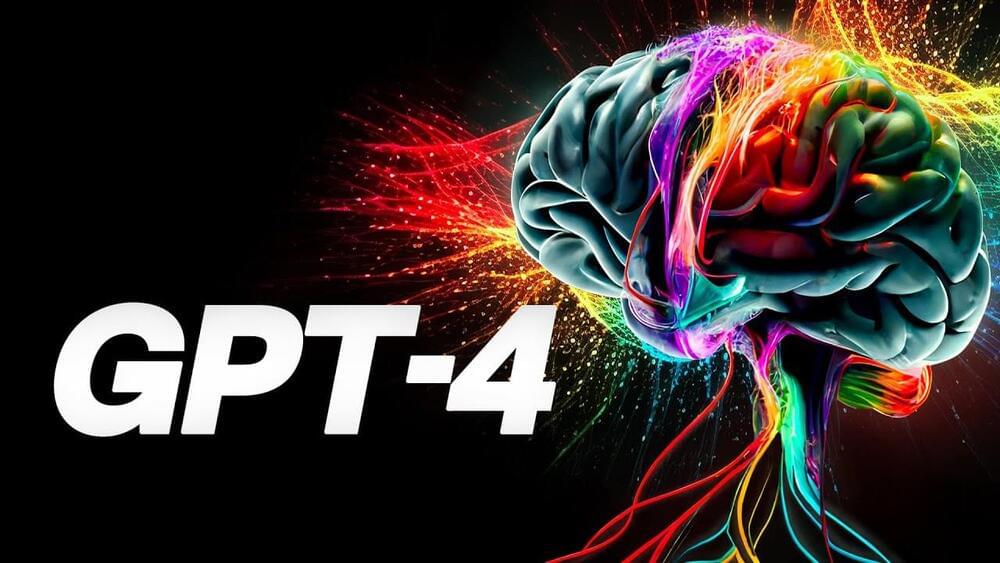
Get ready to be amazed by the next generation of artificial intelligence. In this video, we’ll explore what we know about GPT-4 so far, including facts, rumors, and general expectations for this next-generation AI model. From its capabilities to its potential uses, we’ll take a deep dive into everything you need to know about GPT-4.
🔔 Did you enjoy the content? Subscribe here:
- https://rb.gy/nekyhx.
Continue reading “GPT-4: The AI Breakthrough That Will Change Everything” »
Jan 20, 2023
Atlas : 40 years of development | Boston Dynamics (1983 — 2023)
Posted by Kelvin Dafiaghor in category: robotics/AI
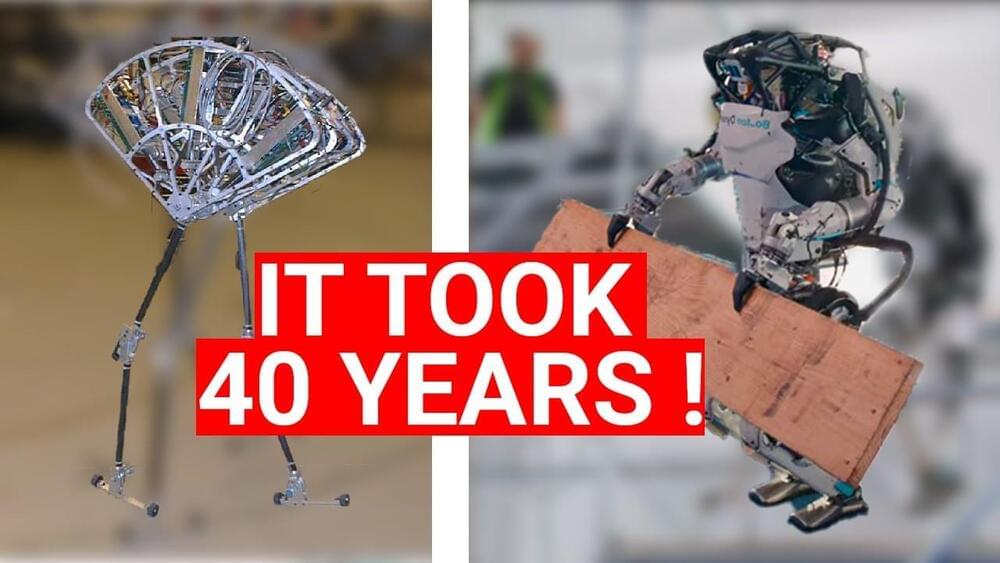
https://youtube.com/watch?v=E7qJQ2i47ZY
This video shows the humble beginnings and the 40 years of development journey of Boston dynamics’ robot ATLAS. We start with the first model developed in 1983 in the leg lab in MIT, all the way to the current version of Atlas shown in 2023 in the Boston dynamics youtube channel.
Atlas is an incredibly advanced humanoid robot that has been developed by the robotics company Boston Dynamics. It is a bipedal robot that stands at 6 feet tall and weighs 180 pounds. It is capable of performing a variety of tasks, including walking, running, jumping, and even performing backflips.
Continue reading “Atlas : 40 years of development | Boston Dynamics (1983 — 2023)” »
Jan 20, 2023
Vertical Takeoff and Landing Experimental Plane
Posted by Omuterema Akhahenda in category: military
For the past 60 years, helicopters have provided essential vertical takeoff and landing (VTOL) capabilities–omnidirectional maneuverability, hovering, landing on almost any flat surface–for countless military operations. Even as VTOL aircraft technology continues to advance, however, one key goal still remains elusive: improving top speed beyond 150 kt-170 kt. Faster VTOL aircraft could shorten mission times and increase the potential for successful operations, while reducing vulnerability to enemy attack. Unfortunately, new VTOL designs so far have been unable to increase top speed without unacceptable compromises in range, efficiency, useful payload or simplicity of design.
Defense Advanced Research Projects Agency.
Our Research.
Continue reading “Vertical Takeoff and Landing Experimental Plane” »
Jan 20, 2023
Ripples in fabric of universe may reveal start of time
Posted by Quinn Sena in categories: cosmology, nuclear energy, physics
Scientists have advanced in discovering how to use ripples in space-time known as gravitational waves to peer back to the beginning of everything we know. The researchers say they can better understand the state of the cosmos shortly after the Big Bang by learning how these ripples in the fabric of the universe flow through planets and the gas between the galaxies.
“We can’t see the early universe directly, but maybe we can see it indirectly if we look at how gravitational waves from that time have affected matter and radiation that we can observe today,” said Deepen Garg, lead author of a paper reporting the results in the Journal of Cosmology and Astroparticle Physics. Garg is a graduate student in the Princeton Program in Plasma Physics, which is based at the U.S. Department of Energy’s (DOE) Princeton Plasma Physics Laboratory (PPPL).
Garg and his advisor Ilya Dodin, who is affiliated with both Princeton University and PPPL, adapted this technique from their research into fusion energy, the process powering the sun and stars that scientists are developing to create electricity on Earth without emitting greenhouse gases or producing long-lived radioactive waste. Fusion scientists calculate how electromagnetic waves move through plasma, the soup of electrons and atomic nuclei that fuels fusion facilities known as tokamaks and stellarators.
Jan 20, 2023
Scientists Find Imprint of Universe That Existed Before the Big Bang
Posted by Quinn Sena in categories: cosmology, existential risks
Circa 2014 face_with_colon_three
Researchers spar over the meaning of findings and the precise timing of doomsday clock.
Jan 20, 2023
Nail Polish Dryers Damage DNA and Cause Mutations in Cell Lines
Posted by Raphael Ramos in categories: bioengineering, biotech/medical, chemistry, health
The ultraviolet nail polish drying devices used to cure gel manicures may pose more of a public health concern than previously thought. Researchers at the University of California San Diego studied these ultraviolet (UV) light emitting devices, and found that their use leads to cell death and cancer-causing mutations in human cells.
The devices are a common fixture in nail salons, and generally use a particular spectrum of UV light (340-395nm) to cure the chemicals used in gel manicures. While tanning beds use a different spectrum of UV light (280-400nm) that studies have conclusively proven to be carcinogenic, the spectrum used in the nail dryers has not been well studied.
“If you look at the way these devices are presented, they are marketed as safe, with nothing to be concerned about,” said Ludmil Alexandrov, a professor of bioengineering as well as cellular and molecular medicine at UC San Diego, and corresponding author of the study published Jan. 17 in Nature Communications. “But to the best of our knowledge, no one has actually studied these devices and how they affect human cells at the molecular and cellular levels until now.”
